Essence of Ancient Indian paintings
Hindu art in Indian Culture News Hinduism, one of the ancient faith of the world, it has a vibrant and rich history of presenting the forms of Hindu Paintings. Originating in Europe in remote antiquity, it is a polytheistic system brought by the Aryans to India who revered a myriad of gods and goddesses. The challenge for artists is not lack of subject matter, but rather how to offer a form to god that by its very nature is formless. Depending chiefly on sacred religious texts wherein the tales of the gods and goddesses are told and retold, certain tales and myths became favorites for illustration, and standard folklores were established for specific deities. These images include certain features, body postures, hand gestures, hair styles, hues, animal associations. Most of these components are saturated with intense religious symbolism. A visual vocabulary was thus established and once built up, became cemented. Such architectural serve as a visual masterpiece that has since remained fairly intact with the passage of time.
Enlightenment through Art of the divine
Since its beginning, ancient artists made paintings whose objective was primarily to help devotees in concentrate upon their worship. Hindu Paintings whose Monumental stone statues or relief sculptures were placed inside as well as outside the temples, large bronze cult statues were set up for public worship. Countless smaller figurines have been made for installation in household shrines so that devotees may offer personal devotion. Paintings inspired from Ramayana, Mahabharata besides reincarnation tales of major God’s of Hinduism- Brahma, Vishnu, and Shiva are found in every regional culture and monuments, the tapestries, ritualistic items, theatrical masks, and other items containing images of deities have been made in various media, all constituting part of a dense pictorial encyclopaedia used to demonstrate divine subject matter. The magnificent ancient art form presents some of the most important deities of the Hindu shrines. Vishnu and his ten avatars, especially the figure of Krishna. the much revered and cute elephant-headed Ganesha. The renowned goddesses Lakshmi, Devi Parvati, Devi Durga, the fierce Kali, and the goddess of knowledge and intellect- Sarasvati are represented. Together with these major gods and goddesses, a collection of lesser-known male and female deities are also included.
Representation of faith in Indian Culture
This sophisticated corpus of imagery delivers instruction, support, and inspiration for millions of devout Hindu believers.
The artworks ranges from the ages of the eighth or ninth century to the present. Most were made in India, though a few emerged in neighboring countries of the south or southeast Asia too. Artworks produced in time-adhered classic styles, sharpened through centuries of practice, are displayed alongside items that exhibit regional stylizations, charming folk-style features, or even contemporary artistic license. Considered overall, the exhibition of Indian architectural paintings offers viewers an introduction to the remarkably rich and varied visual landscape of Hindu divinity.
The designing of Hindu temples, like that of religious images, was deciphered in code inside the Shilpa-shastras (craft scriptures), and every aspect of the design was believed to offer the symbolic representation of some feature of the cosmos. The idea of microcosmic symbolism is evident in Hindu faith and beliefs and comes from Vedic times; the Brahmanas are fully stocked with similar cosmic interpretations of the many features of the sacrifice. The Vedic idea of the correspondence (Mitra) between microcosm and macrocosm was implemented in the medieval temple, which was laid out geometrically to mirror the structure of the universe, with its four geometric quarters and a celestial roof. The temple also signifies the mountain at the navel of the world and often somewhat resembles a mountain. On the periphery were carved the most realistic and various images, including battles, hunting, circuses, animals, birds, and gods.
The oldest known Indian art sculptures were produced by the Indus Valley Civilization between 2,500 B.C. and 1,800 B.C. They made small terracotta and bronze figures that also highlighted humans and animals such as cows and monkeys. In the 6th century B.C., the rise of Buddhism opened for religious-themed art, frequently in the form of stone and bronze sculptures. During this time, religious painters also experimented with the creation of vast temples sculptured in stone and embellished with Greek-influenced columns.
SILVER-INLAID COPPER ALLOY FIGURE OF SHAKYAMUNI BUDDHA KASHMIR is an eminent art masterpiece of the age. Architecture and sculpture are inevitably associated in India. Therefore, if one speaks of Indian architecture without taking note of the lavish embellishments of sculptures with which monuments are covered, a partial and unclear picture is presented. In the Hindu temple, enormous niches in the three outer walls of the sanctum house sculpted images that depict various perspectives of the deity preserved within. The sanctum image presents the essence of the deity. For instance, the nook of a temple devoted to a Vishnu may present his various aggressive feats; and those of a temple to the chief Goddess, her combats with various demons. Regional changes in depicts exist.


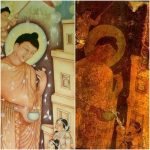


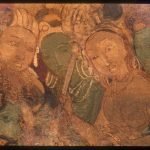

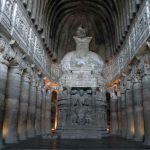

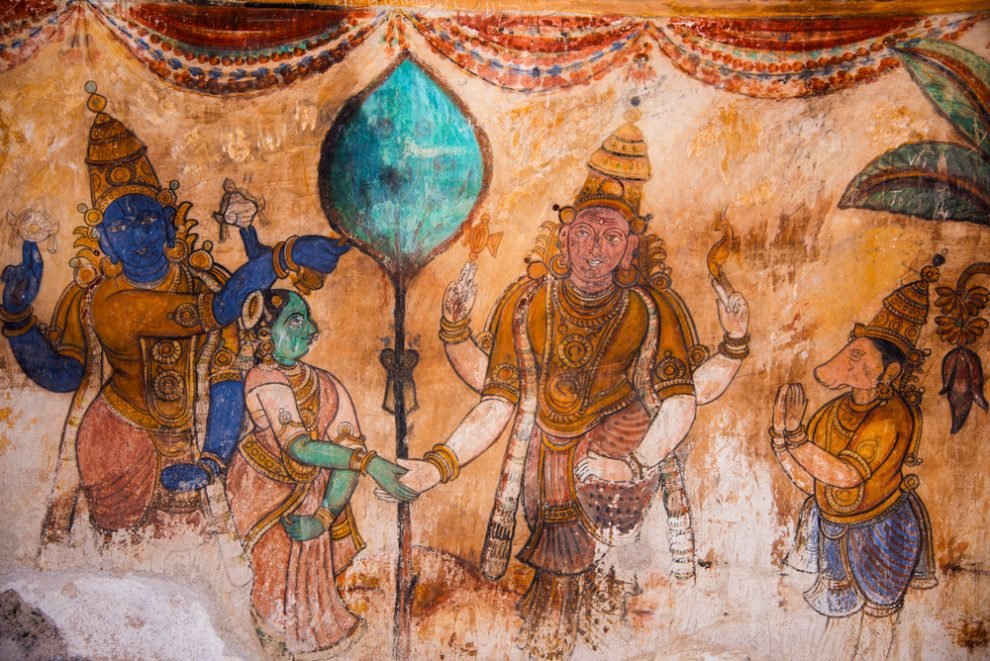
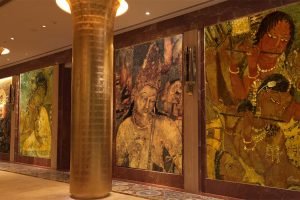





Add Comment